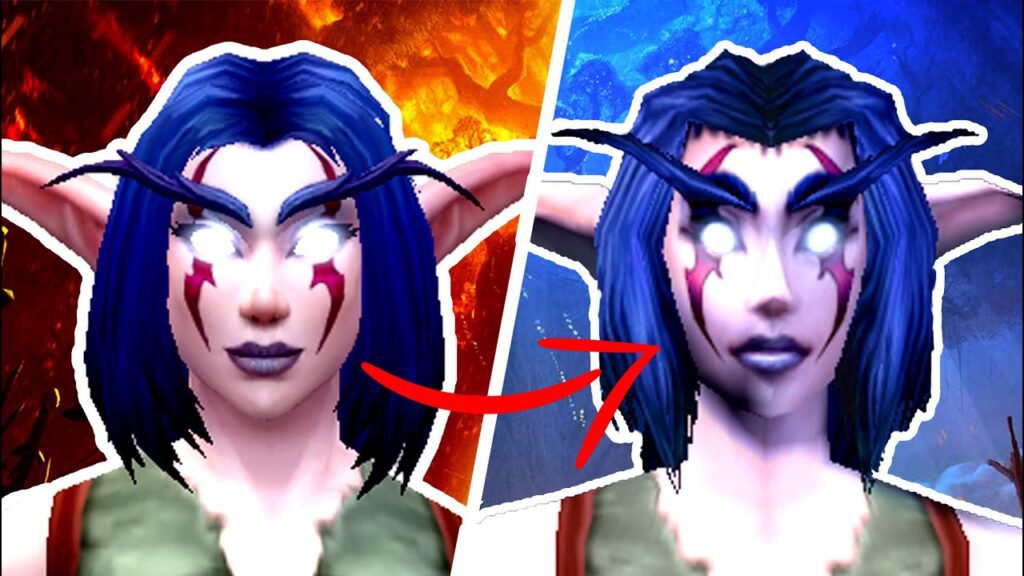Since its release in 2004, World of Warcraft (WoW) has undergone significant changes and transformations. Classic WoW allowed players to explore Azeroth and choose from different races, classes, and factions. Later expansions introduced new zones, races, and gameplay features such as flying mounts, hero classes, and garrisons. Shadowlands, the latest expansion released in 2020, takes players to the afterlife with new customizations and dungeon experiences. Through its evolution journey, WoW continues to attract and engage players worldwide with its immersive world, epic battles, and endless possibilities.
The Evolution of World of Warcraft: From Classic to Shadowlands
World of Warcraft (WoW) is a massively multiplayer online role-playing game (MMORPG) that has been entertaining gamers around the world for over 15 years. The game has undergone several changes and transformations, from its classic version to the recent Shadowlands expansion. This article outlines the various stages of this evolution journey.
Classic World of Warcraft
Classic WoW was released in 2004 and was the first iteration of the game, which allowed players to explore the fictional world of Azeroth, filled with magic, danger, and adventure. The game allowed players to choose from nine different races and had eight playable classes. There were also two factions, the Alliance and the Horde, players could choose from, each with unique characteristics and abilities.
Classic WoW had several features that made it a favorite among players, including a massive open world, challenging dungeons, and a complex crafting system. The game’s success led to the release of several expansions, each with new content and gameplay features.
The Burning Crusade Expansion
In 2007, Blizzard Entertainment released its first expansion, The Burning Crusade, which brought new zones, quests, and raids to the game. It also introduced two new player races, the Blood Elves, and the Draenei, each with unique abilities and traits.
The expansion also revamped the game’s player-versus-player (PvP) system, introducing new battlegrounds and arenas. It introduced the flying mounts, allowing players to soar through the skies of Azeroth and explore new territories.
Wrath of the Lich King Expansion
The second expansion, Wrath of the Lich King, was released in 2008 and introduced players to the frozen continent of Northrend. The expansion also introduced a new hero class, the Death Knight, which became immediately popular among players.
The expansion also revamped the game’s graphics, making the game look more realistic and immersive. It introduced a new raid system that allowed players to join groups of up to 25 players to take on challenging bosses in massive dungeons.
Cataclysm Expansion
The third expansion, Cataclysm, was released in 2010, and it brought several major changes to the game’s world. It introduced a new leveling experience, revamped the game’s zones, and introduced two new races, the Worgen and Goblins.
The expansion also introduced a new PvP progression system, which allowed players to earn titles and rewards as they rose through the ranks. It also revamped the game’s talent system, making it more accessible and dynamic.
Mists of Pandaria Expansion
In 2012, Blizzard released the fourth expansion, Mists of Pandaria, which introduced players to the continent of Pandaria, a new race, the Pandaren, and a new class, the Monk.
The expansion also added a new feature called Pet Battles, where players could collect and battle with pets around the game’s world. It also introduced scenarios, short instances for three players, which told short stories in the game’s lore.
Warlords of Draenor Expansion
The fifth expansion, Warlords of Draenor, was released in 2014 and brought players back in time to a parallel version of the game’s past, where they could interact with the past of their favorite characters.
The expansion introduced a new feature called Garrisons, allowing players to build and run their own fortress that provides them resources and followers who could help them on their adventures. The expansion also introduced new zones and dungeons, making the game world feel more expanded and detailed.
Legion Expansion
In 2016, Blizzard released the sixth expansion, Legion, which took place in The Broken Isles, a new island group. The expansion introduced new quests, zones, dungeons, and raids, and brought back several classic characters from the game’s past.
The expansion also introduced the artifact weapons, powerful weapons that could be upgraded and personalized by players as they leveled up. It also introduced the Demon Hunter class, which was unique to the game’s universe and is now a favorite among players.
Battle for Azeroth Expansion
In 2018, Blizzard released Battle for Azeroth, the seventh expansion, which brought players back to Azeroth in the midst of a faction war. The expansion introduced new zones, raids, and dungeons and gave players the opportunity to explore the game’s world in new and exciting ways.
The expansion also introduced new Allied Races, which were variations of existing races with unique abilities and appearances. It also introduced the Warfronts, massive battles between factions that players could engage in.
Shadowlands Expansion
In 2020, Blizzard Entertainment released the eighth expansion, Shadowlands, which takes players to the afterlife, where they can explore new zones and meet iconic characters from the game’s past.
The expansion also introduces new customization options for players, including new character customization options, the ability to choose your own starting zone, and new class abilities. It also introduced the new Torghast, Tower of the Damned, dungeon, which has become a new favorite among players.
Conclusion
From the classic version to the recent expansion, World of Warcraft has evolved through the years, bringing new worlds, characters, and gameplay features to its players. Despite its various transformations and adaptations, the game remains a favorite among gamers around the world, who continue to be drawn to its immersive world, epic battles, and endless possibilities.
